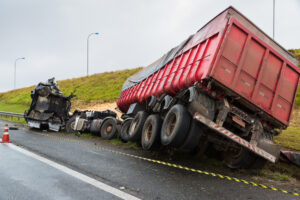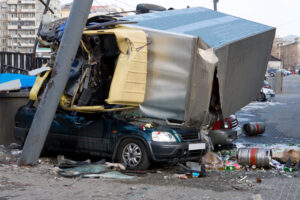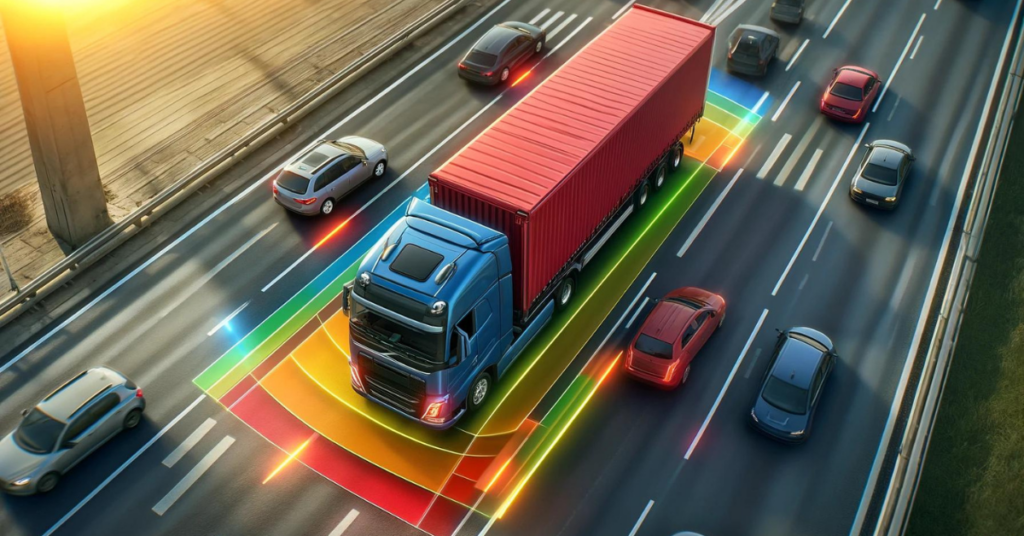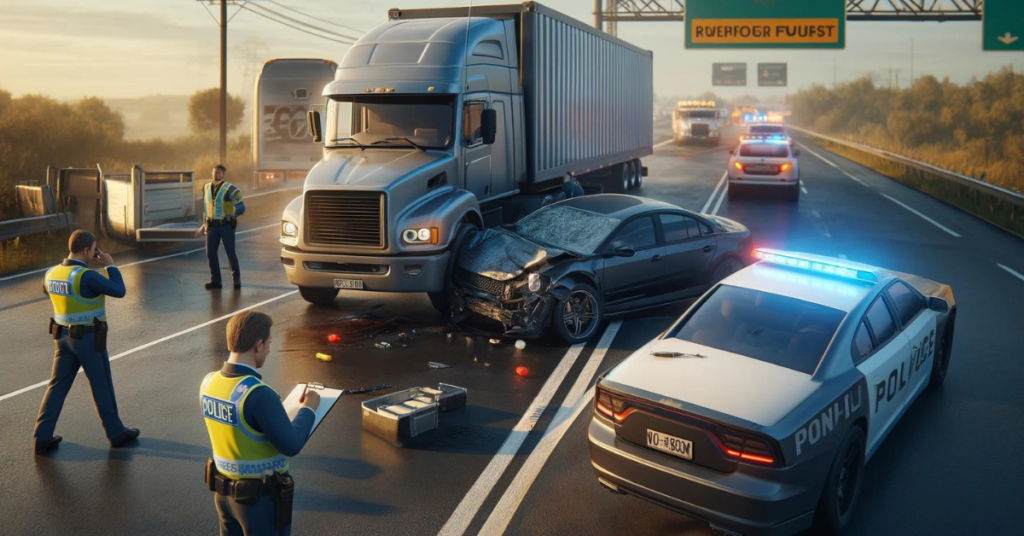Common Causes of Blind Spot Truck Accidents

One common reason for blind spot truck accidents is that truck drivers sometimes don’t check their blind spots properly, which can lead to dangerous situations on the road. Thus, accidents could be avoided if truck drivers were more careful to look in all their mirrors.
How drivers set up their mirrors is also important for preventing accidents caused by blind spots. Each driver should adjust their mirrors to fit their needs to see better and reduce the areas they can’t see without turning their head—these are called “blind spots.” But sometimes drivers forget to adjust or check their mirrors, leading to accidents.
Some other factors contributing to these types of collisions involving trucks include:
- Being distracted or tired while driving makes it more likely to miss those important areas you can’t see in your mirrors.
- Doing dangerous things like driving drunk or not paying attention to the road makes accidents more likely.
- Being distracted by things like not getting enough sleep or using your phone while driving makes it even more likely that you’ll miss things in your blind spots.
That’s why it’s essential for people who drive big vehicles like trucks to understand and deal with these issues. By being careful and paying attention to these things, we can avoid accidents and keep everyone safe on the road.
Nevada Laws and Comparative Negligence
Potential Liable Parties in Blind Spot Truck Accidents

In accidents involving trucks and blind spots, more than one party could be responsible. The driver might be at fault if they didn’t check their mirrors or signal properly while changing lanes.
Trucking companies might also share the blame. They could be responsible for their drivers’ actions and could be held liable for not hiring trained drivers or providing enough supervision. If the accident happens because of faulty equipment like mirrors or computer systems, the company could be responsible for that, too.
But it doesn’t stop there. Other parties, like third-party brokers or vehicle manufacturers, might also play a role. Figuring out who’s to blame requires examining everyone involved in the accident and what they did leading up to it.
Defense Strategies and Overcoming Challenges
Trucking accidents involving blind spots can be legally complex. Trucking companies and insurers often use different tactics to avoid blame when such accidents happen. They might argue that the person injured in the accident shares some fault for not being careful or staying in the truck’s blind spot for too long. This can complicate things by introducing questions about the victim’s actions.
These companies might also try to blame someone else, like claiming there was a problem with the truck itself or insufficient evidence to support the victim’s claims. They might even accuse the victim of lying or exaggerating about their injuries. Sometimes, insurers and trucking companies act unfairly by not fully investigating accidents or offering settlements that are too low.
To deal with these challenges, it’s important to have experienced attorneys who can:
- Prove liability thoroughly to counter claims of insufficient evidence.
- Navigate negotiations with insurance companies effectively.
- Keep pressure on to resolve cases more quickly.
- Help reduce the stress felt by those affected by the accident.
- It increases the chances of getting fair compensation.
If it’s shown that the liable party acted extremely recklessly, punitive damages—a form of punishment—can be pursued. This not only penalizes them but also serves as a warning to prevent similar negligence in the future.
Compensation for Victims of Blind Spot Truck Accidents
If you or someone you know is involved in a truck accident caused by a blind spot, it’s important to understand that Nevada laws help you with compensation. Here’s what you should know:
- Healthcare Expenses: You can seek compensation for medical bills resulting from injuries sustained in the accident.
- Lost Earnings: If you cannot work due to your injuries, you may be entitled to compensation for your lost income.
- Property Damage: Any damage to your property caused by the accident can also be accounted for in compensation.
- Pain and Suffering: Beyond physical injuries, you can seek compensation for the emotional distress and anguish experienced as a result of the accident.
It’s important to note that while financial compensation can’t erase the trauma of the accident, it can help alleviate some of the burdens you face in its aftermath.
Reparations may cover immediate medical costs, ongoing treatments, rehabilitation expenses, lost future earnings, and assistance with daily tasks if you cannot perform them due to your injuries. Additionally, non-economic damages can be claimed for psychological suffering and compromised quality of life.
It’s important to understand your rights and the compensation possibilities to ensure you receive everything you’re entitled to under the law. If you’ve been involved in a truck accident, seeking legal assistance to guide you through the process is a good idea.
Contact a Truck Accident Attorney For Cases Related to Blind Spot Accidents
When you are a truck accident victim caused by a blind spot, Temple Injury Law can help. We know all about the local laws related to truck accidents. This knowledge is important for proving who’s at fault and getting you the money you deserve. We are also great at explaining everything so that you will feel safe in all the legal jargon.
Schedule a consultation so we can guide you through the legal process and fight for your rights if you’re ever in this situation.




